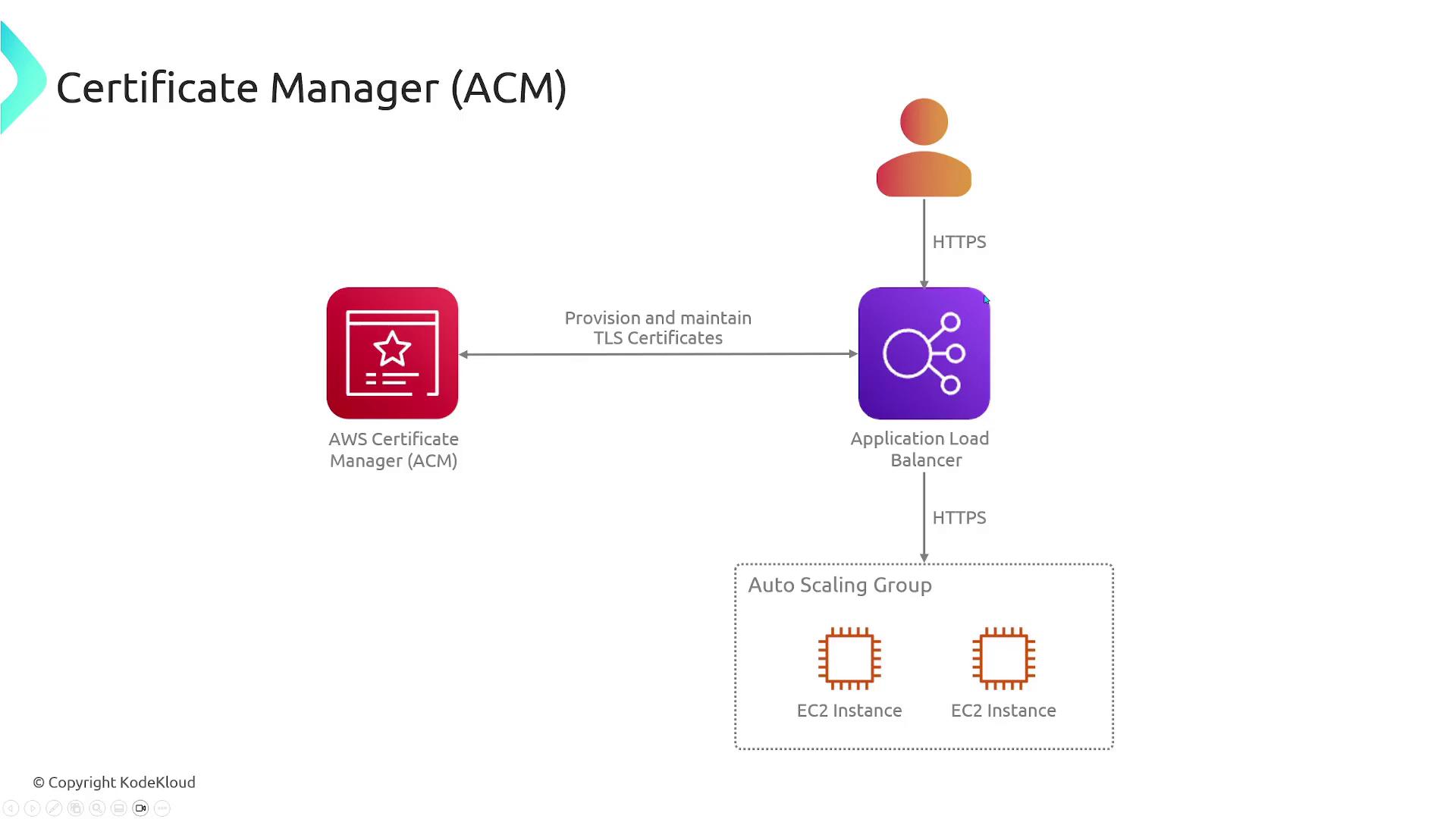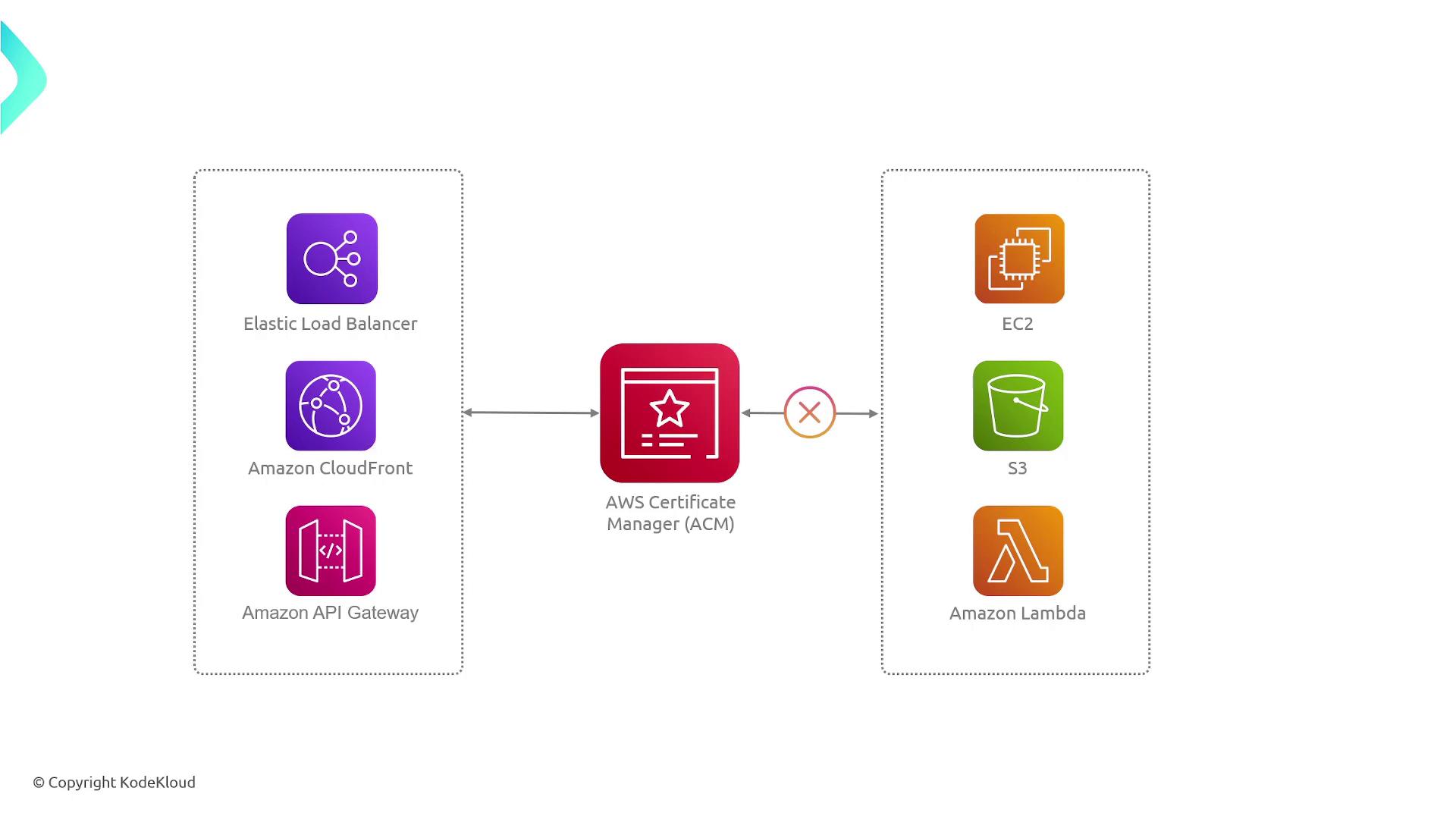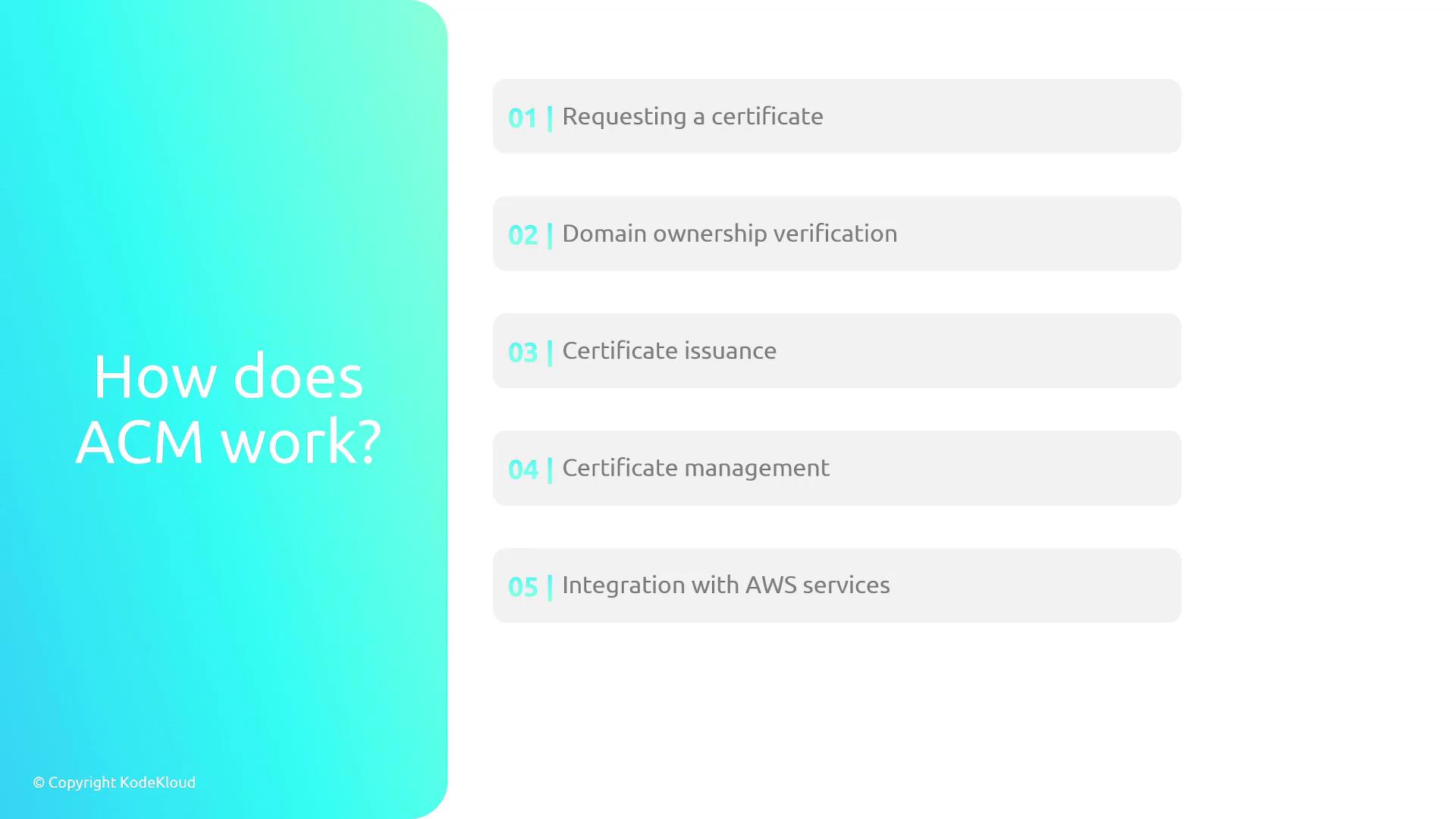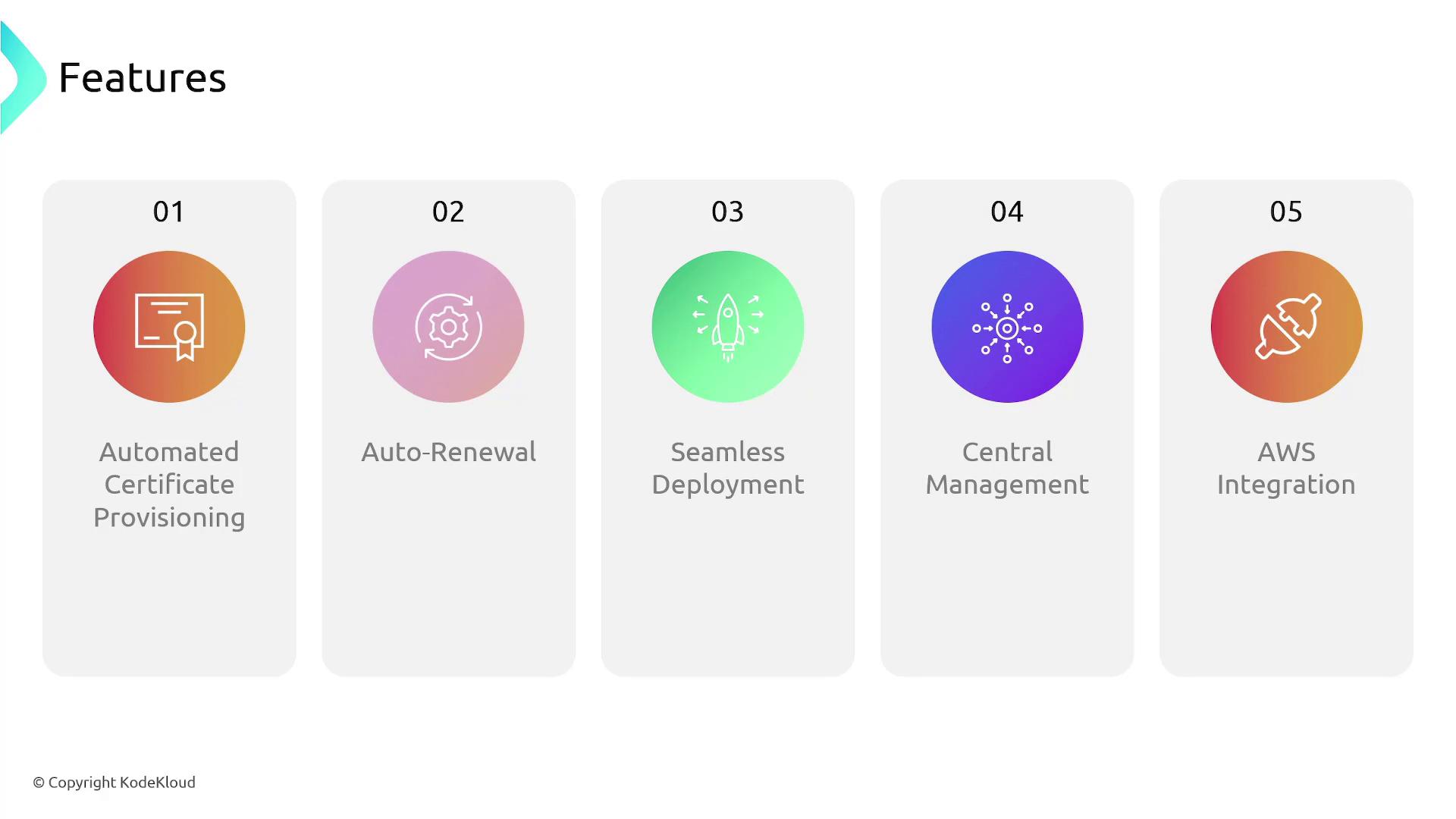AWS Solutions Architect Associate Certification
Services Security
Certificate Manager
In this article, we explore AWS Certificate Manager (ACM) and its essential role in securing web communications. Certificates create trust between clients and servers by verifying identities and ensuring secure data exchange. When you visit a website like google.com, a digital certificate confirms you are connecting with the authentic server.
Certificates serve several critical purposes:
- Authentication: Confirms the identity of the connected machine.
- Data Encryption: Secures data as it travels between your device and the server using HTTPS.
- Data Integrity: Assures that the transmitted data remains unaltered throughout transit.
These benefits are made possible by certificate authorities—trusted organizations that rigorously verify the requester’s identity before issuing a certificate.

What Is AWS Certificate Manager?
AWS Certificate Manager (ACM) is a managed service designed to simplify the generation and management of SSL/TLS certificates for secure web operations. Its key components include:
- AWS Private Certificate Authority (CA): A trusted entity responsible for issuing certificates.
- ACM: Facilitates the entire process—from generating certificates to managing their deployment across multiple AWS services.
For example, when deploying an Elastic Load Balancer (ELB) in front of your web server, you can attach an ACM-provided certificate to enable secure communications. ACM also seamlessly works with other services such as CloudFront and API Gateway, offering a versatile solution for various deployment scenarios.
Requesting and Validating Certificates
ACM provides two main methods for certificate management:
- Request a new SSL/TLS certificate.
- Import an existing certificate.
During the certificate request, you specify the domain names to be covered. Ownership of these domains is verified through either email or DNS validation. When using Amazon Route 53 as your DNS provider, DNS validation can be automated, streamlining the verification process and ensuring only authorized users receive certificates.
Once validation is complete, ACM issues the certificate. You then attach it to an HTTPS listener on your Elastic Load Balancer, which uses the certificate to encrypt and decrypt client traffic. Although this secures communication over the internet, you can decide whether to also encrypt traffic between the load balancer and your backend servers.

Service Integration and Limitations
ACM integrates with several key AWS services such as:
- Elastic Load Balancer
- CloudFront
- API Gateway
Note
ACM is designed to simplify secure communications across your AWS infrastructure by centralizing certificate management.
However, note the following limitations:
- EC2 Instances: ACM certificates cannot be directly installed on EC2 instances; they must be used with services like an ELB that manage external traffic.
- Amazon S3: To enable HTTPS for S3 static website hosting, route traffic through CloudFront using ACM.
- AWS Lambda: Direct support for ACM certificates is not available for Lambda functions.
Additionally, ACM operates regionally. For example, a certificate issued in the US East (N. Virginia) region cannot be used in the US West (Oregon) region; separate certificates are required for each region.

How ACM Works
Using ACM involves several straightforward steps:
- Request a Certificate: Start by submitting a request for the desired domain names.
- Domain Ownership Verification: Confirm that you own or control the specified domains.
- Certificate Issuance: Once the domains are verified, ACM issues the certificate.
- Automatic Renewal: ACM automatically renews certificates, eliminating the need for manual tracking.
- Integration: Finally, integrate the certificate with an AWS service, such as attaching it to an HTTPS listener on an Elastic Load Balancer.
![]()

Key Features of AWS Certificate Manager
ACM offers several features that streamline certificate management and enhance web security:
- Automated Certificate Provisioning: Simplifies the process of acquiring certificates.
- Auto-Renewal: Automatically renews certificates to help avoid unexpected expirations.
- Seamless Deployment: Integrates natively with supported AWS services, reducing the risk of manual errors.
- Central Management: Provides a unified dashboard to manage all of your certificates efficiently.
- Deep AWS Integration: Works seamlessly with various AWS services for enhanced security.

With just a few clicks, you can deploy ACM certificates across your AWS infrastructure to ensure all communications remain secure and encrypted. For more information on AWS security services, check out the AWS Documentation.
Watch Video
Watch video content